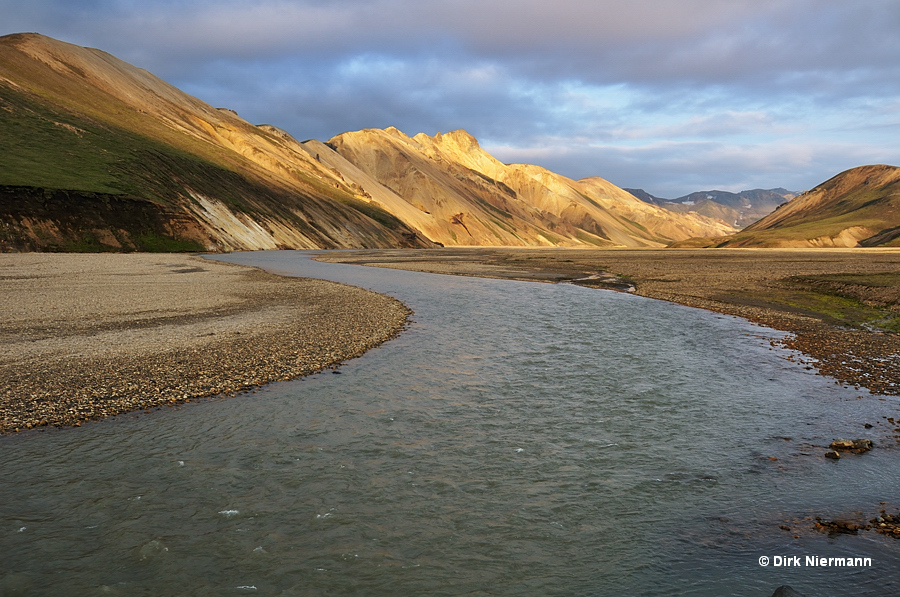Geyser and hot spring sites on Iceland
The Mid-Atlantic Ridge crosses Iceland from the southwest to the northeast. Related tectonic and volcanic activity gave rise to the formation of so-called high-temperature and low-temperature geothermal areas.

By definition a high-temperature area features temperatures of more than 200 °C (392 °F) in a depth of 1000 m (0.6 miles). Sometimes temperatures of discharging steam and hot soil on the surface exceed 150 °C (300 °F). Due to their high surface energy these areas typically generate fumaroles and mud pots. Hot or warm clearwater springs may also be present, but to a lesser percentage compared to low-temperature areas. Quite rare is the formation of geysers. They require an aquifer, high underground temperature, and sufficient low temperature for the existence of liquid water in an adequate amount near the surface. Additionally, a suitable underground structure and chemistry must be given, which supports the formation and stability of plumbing systems. If these requirements are met, geysers may be formed in high-temperature and low-temperature areas. However, they are irrecoverable wonders of nature and deserving protection.
The approximately 30 high-temperature geothermal areas of Iceland are part of 18 geothermal regions. Without exception all are associated with volcanoes, which are lined up along the Mid-Atlantic Rift.
The high-temperature geothermal regions of Iceland are:
- Reykjanes
- Svartsengi-Eldvörp
- Krýsuvík
- Brennisteinsfjöll
- Hengill
- Geysir
- Hveravellir
- Kerlingarfjöll
- Torfajökull
- Köldukvíslarbotnar
- Vonarskarð
- Kverkfjöll
- Askja
- Fremrinámar
- Námafjall
- Kröflusvæði
- Gjástykki
- Þeistareykir
Low-temperature areas in contrast feature less than 150 °C (302 °F) in a depth of 1000 m. Located mainly outside of the volcanic zones, approximately 250 of them are scattered about Iceland. Typically in low-temperature areas no bare, thermally altered ground with fumaroles and mud pots is present. The surroundings of hot springs until close to the rims are covered by vegetation because the ground heat is too low to keep it away. The amount of geysers is correlated roughly with the distance of the low-temperature area to volcanic hot spots. Of course, it is also depending on the underground structure and chemistry, as carried out above.
Considerable accumulations of low-temperature areas in Iceland are at Reykholt in Borgarfjörður (the largest of Iceland), Reykir at Mosfellsbær (near Reykjavik), Dalvik, Akureyri, Hveravellir south of Husavik, or the area east of Selfoss.